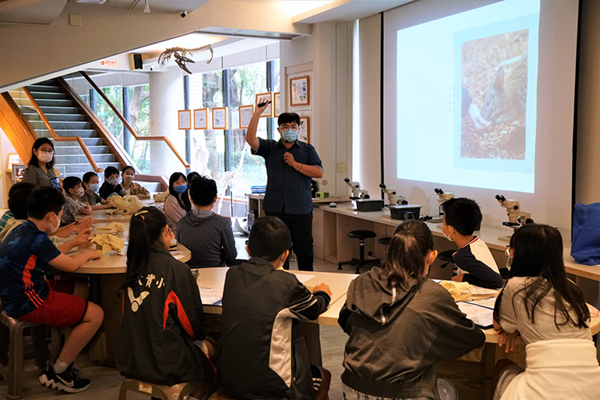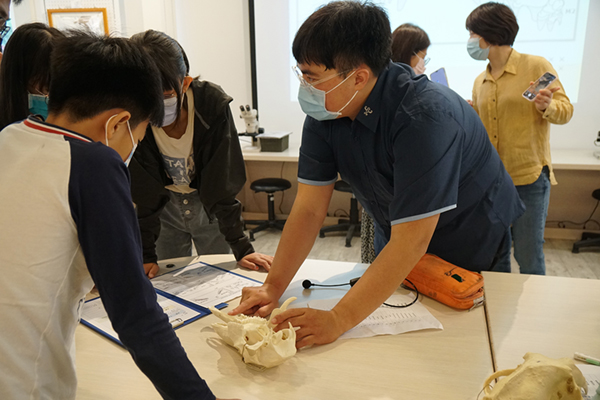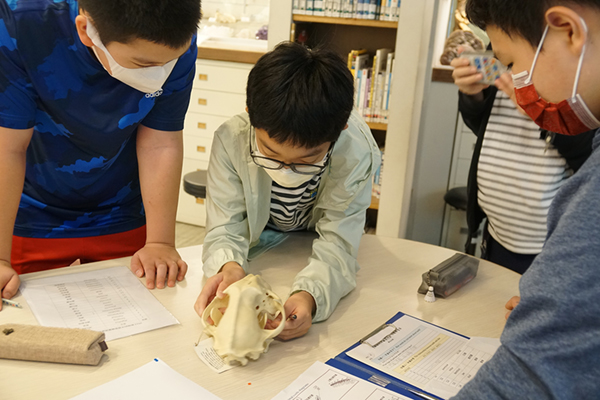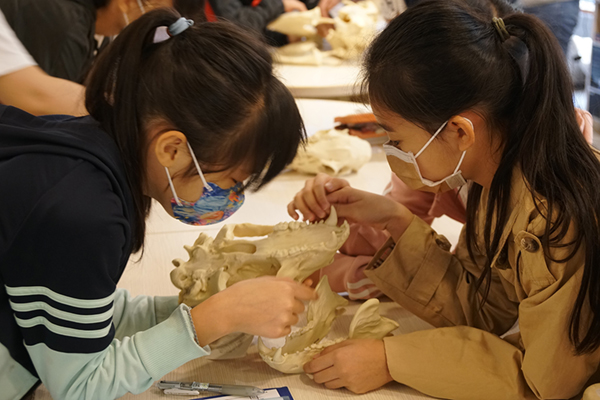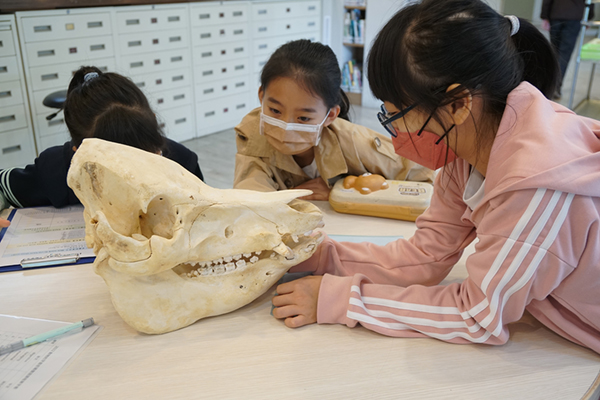


Cracking the Animal Tooth Code
Specimen Exploration
Different types of mammalian teeth have evolved in different environments that possess different food sources. Some have become specialized for eating certain foods. For example, there are differences in the teeth of carnivores, herbivores, and omnivores. Therefore, even if we cannot see what types of foods an animal ate while alive, after its death we can determine its diet based on its teeth. The characteristics, numbers, and arrangements of teeth are clues for identifying mammals.
Scientific learning is emphasized, including inquiry, observation, comparison, and deduction, as participants gain an understanding of their own teeth and explore the skulls of “mystery” animals. In addition, the relationships between teeth and diet are revealed, as various animals are identified based on dentition.
What is the animal tooth code?
Let’s explore this topic using specimens.
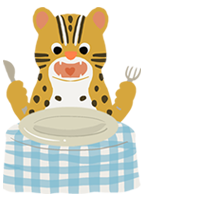
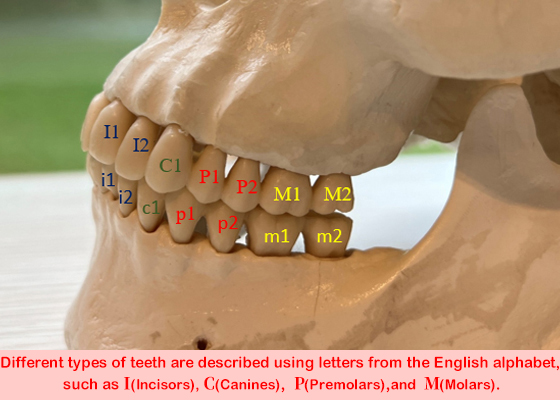
Lesson 1: Types of Teeth
Scientists record the teeth of mammals using a dental formula known as dentition. Dentition refers to the development of teeth and their arrangement. In the skull on the left, the arrangement and numbers of teeth are as follows: incisors, canines, premolars, and molars, 2.1.2.2.
Since teeth grow symmetrically on the left and right, this formula represents the arrangement of teeth on one side and is written as a fraction. The upper numbers represent the teeth in the upper jaw and the lower numbers the teeth in the lower jaw. Therefore, the dentition in the image is written as 
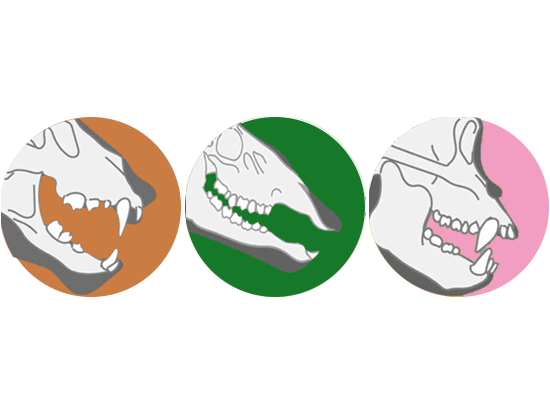
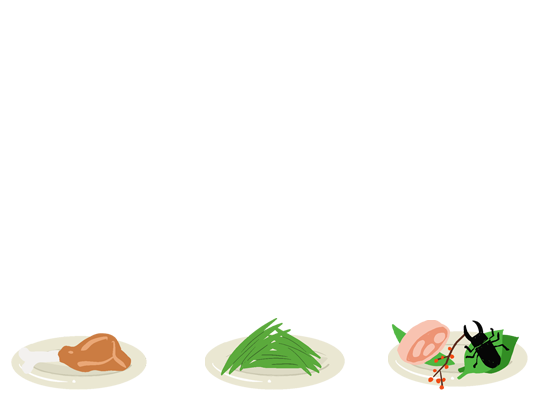
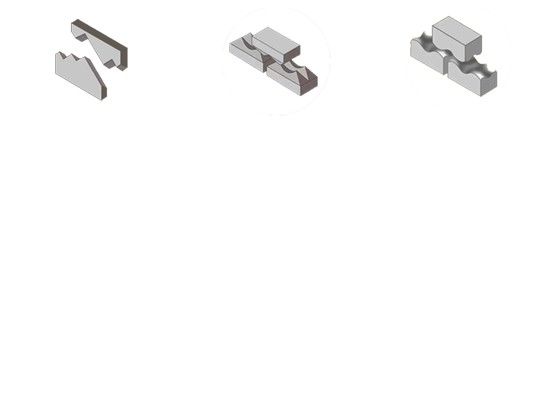
Lesson 2: Teeth and diet
From your observations what are the characteristics of the teeth of carnivores, herbivores, and omnivores?
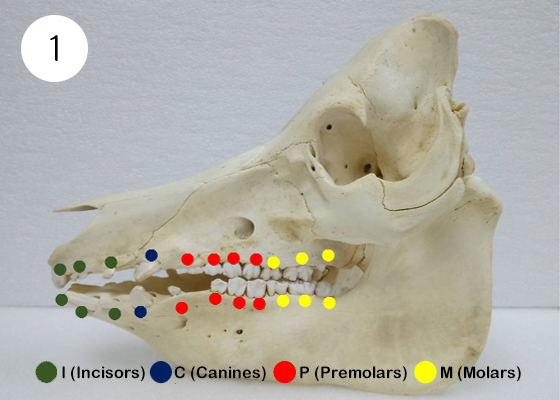
Lesson 3: Which animal is it
Observe the arrangements and numbers of teeth in the figures. Compare them with the dentitions to identify the animals.
Answer
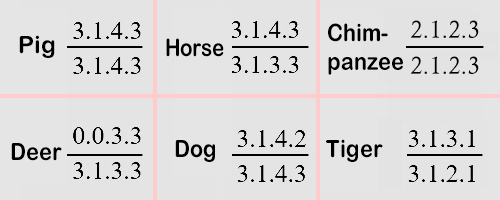
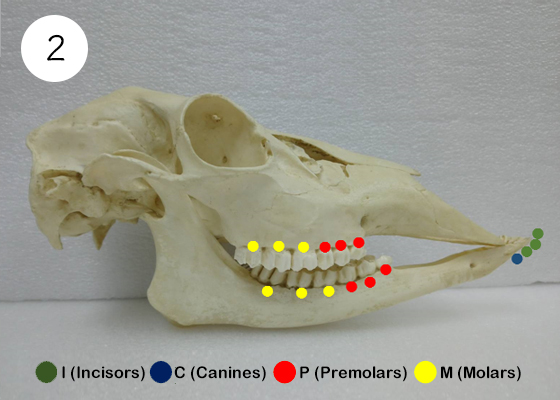
Lesson 3: Which animal is it
Observe the arrangements and numbers of teeth in the figures. Compare them with the dentitions to identify the animals.
Answer

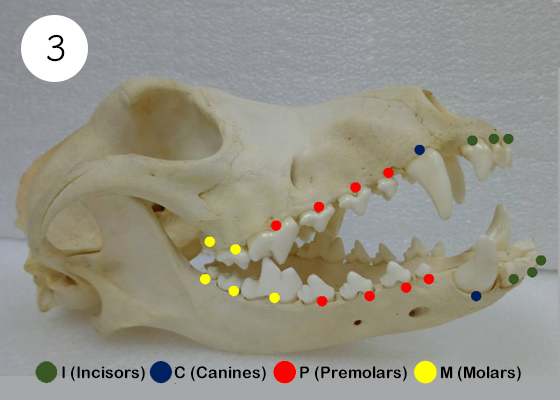
Lesson 3: Which animal is it
Observe the arrangements and numbers of teeth in the figures. Compare them with the dentitions to identify the animals.
Answer

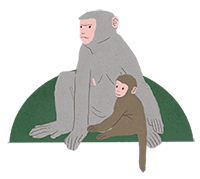
Features


© Copyright by National Museum of Natural Science.
